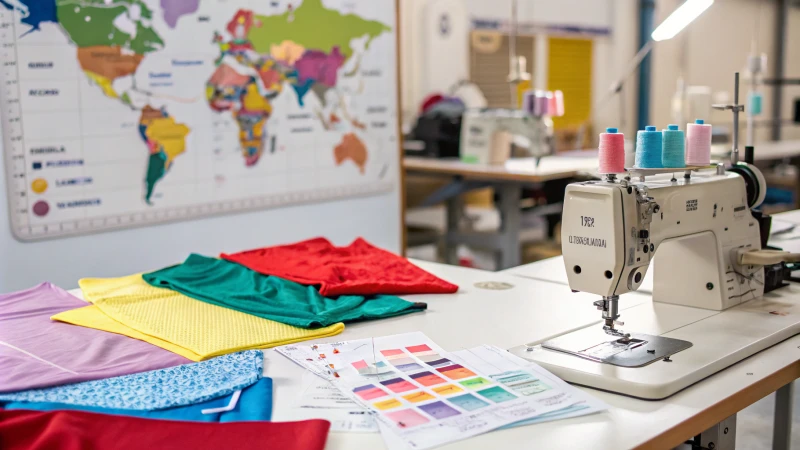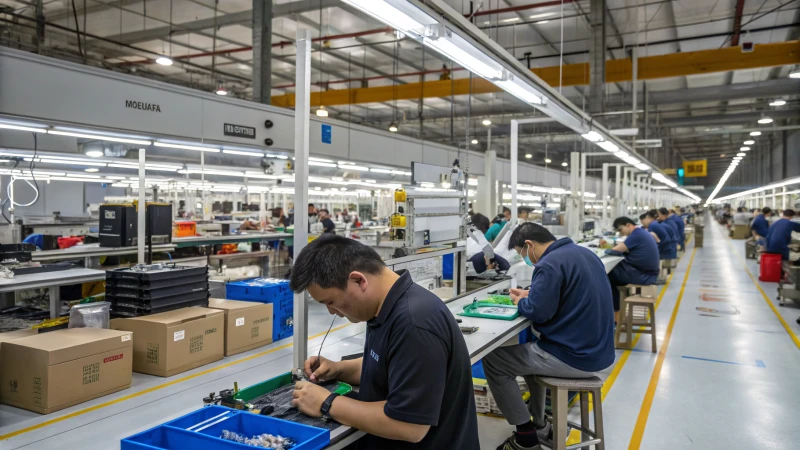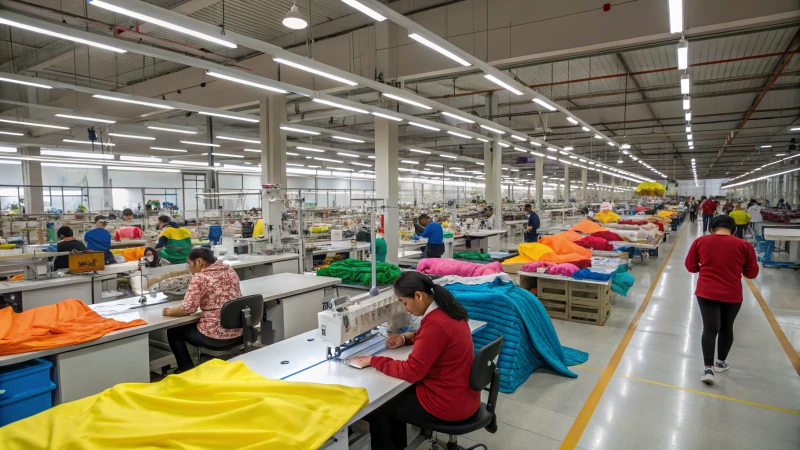
Have you ever tried juggling on a unicycle? That's how expanding a custom underwear business often feels!
Growing a custom underwear business presents obstacles. Managing how much to produce and keeping high quality are difficult tasks. Balancing stock and controlling expenses also arise as challenges. The market has tough competitors. Logistics play a significant role. Creating tailored products adds complexity to the process. Attracting new customers is essential. Sustainability in operations really matters.
This may feel too much, but relax! A solid plan probably turns these problems into an exciting journey. Embrace this adventure with me as I look at each roadblock. Learn practical tips and insights to take your brand to new levels.
Managing production capacity is a key challenge in scaling.True
Scaling requires increased production, which can strain existing capacities.
Sustainability practices are not important in scaling.False
Sustainability is crucial for modern businesses to meet consumer expectations.
How Can You Enhance Production Capacity Efficiently?
Do you ever feel like running a marathon on a treadmill, pushing production without reaching the end? Let's explore ways to operate not just faster, but smarter and really efficient.
To grow production capacity efficiently, focus on improving processes, buying modern technology and sharpening workforce management. Streamlined operations boost productivity. Lean manufacturing principles help. Big gains follow. You probably won't have high costs.

Streamlining Operations
Imagine this: I scour through my morning routine and every minute saved feels like a small triumph. Streamlining operations is similarly rewarding. Analyzing workflows and spotting inefficiencies clears bottlenecks that create delays. Use strategies like the "5S" approach - Sort, Set in order, Shine, Standardize, Sustain - to turn chaos into order. It's like organizing your closet; once it's done, everything seems easier and more efficient.
Investing in Technology
Upgrading your phone often feels like opening a door to many new possibilities. The same goes for investing in production technology. Switching to automated machinery or an ERP system might seem intimidating. However, imagine reducing human error and speeding up production cycles. These tools offer more than just better efficiency; they provide a bird’s eye view of operations, delivering real-time insights for smarter decisions.
Table: Benefits of ERP Systems
| Benefit | Description |
|---|---|
| Real-time insights | Access to real-time data for informed decision-making |
| Process integration | Seamless integration of various business processes |
| Efficiency improvement | Reduces redundancies and streamlines operations |
Workforce Management
I realized once that a well-coordinated team resembles a well-choreographed dance - every move in harmony. Offering training and development increases not only productivity but also morale. Cross-training is like having a Swiss army knife of skills in your team, giving flexibility when the unexpected occurs. Encouraging a space where ideas flow freely can lead to innovative solutions that further streamline processes.
Embracing Lean Manufacturing
Decluttering often brings clarity from chaos. Lean manufacturing is about seeing value in simplicity and efficiency. Techniques like Just-In-Time (JIT) inventory management make sure materials are available only when needed, reducing waste and storage costs.
Table: Key Lean Manufacturing Principles
| Principle | Focus |
|---|---|
| Value | Define what adds value from the customer's perspective |
| Value stream | Map out all steps in the value stream and eliminate waste |
| Continuous flow | Ensure smooth flow of materials through the production line |
Considering these strategies lifts production capacity efficiently. It's like setting up a chain reaction where each improvement leads to another, setting your business on a path for growth in competitive markets. Exploring ways to automate production1 complements these strategies beautifully.
5S methodology improves workplace organization.True
5S enhances organization by sorting, setting in order, and standardizing.
ERP systems increase redundancy in operations.False
ERP systems reduce redundancies by integrating business processes.
How Can You Ensure Consistent Product Quality?
Do you often think about keeping your products very great, especially when your business expands?
Steady product quality results from careful planning, strong quality checks, ongoing improvements and good supplier oversight. Blending these methods probably keeps businesses reaching high standards in every production phase, winning customer happiness and brand loyalty also.

Strategic Planning for Quality Control
I remember the excitement when I started my business. Creating something unique felt amazing. But I faced the tough job of keeping quality high. It wasn’t just about a new product; it was about a product that always impressed customers. Planning strategically became very important. Clear goals for quality helped my team focus on what we wanted in the long run. It also helped us spot possible problems early. Implementing a quality management system2 acted like a map guiding us.
Robust Quality Control Processes
I learned that strong quality control is critical. I began checking and testing products at each step of production, which caught problems before they grew big. Using tools for process control helped me track changes and keep standards high.
| Stage | Quality Control Measure |
|---|---|
| Raw Material | Supplier audits, material certification |
| Production | In-line inspections, real-time monitoring |
| Post-Production | Final testing, product sampling |
Continuous Improvement Initiatives
I strongly believe in always improving. This mindset pushed my business ahead. Techniques such as Lean Manufacturing3 and Six Sigma methods helped us cut unwanted waste and disorder, leading to a stronger, more efficient operation with steady product quality.
Effective Supplier Management
Suppliers are crucial for quality. Building strong connections through talks and common goals made sure materials were good. Implementing a supplier scorecard system4 helped us regularly check their work.
Leveraging Technology for Quality Assurance
I was careful with technology at first, but using automated checks and data analysis reduced mistakes and increased efficiency. Technology brings precision; it supports growth without losing quality.
Focusing on these methods showed me how to maintain consistent quality across different production cycles while meeting evolving customer expectations. A focus on a culture of quality and leveraging technological advancements is essential in any competitive market.
Strategic planning aligns quality with long-term goals.True
Strategic planning sets clear objectives for quality, guiding production.
Supplier audits are unnecessary for raw material quality.False
Supplier audits ensure raw materials meet required standards.
Why Is Inventory Management Crucial in Scaling?
I once discovered the difficult truth that growing a business means not just increasing sales, but also really understanding inventory control.
Growing a business requires smart inventory management. This practice keeps stock at the right level. It stops running out of stock and avoids making too much. Customers stay happy. Lower storage costs become possible. Business operations flow better. This helps the company grow by matching supply with demand accurately.

The Balance Between Supply and Demand
When scaling my business, I quickly learned that changing demand could lead to success or failure. Effective inventory management5 became essential. It helped me predict better and lower the risk of running out of stock or having too much. This skill was like having a crystal ball - but even better!
Using inventory management software kept my stock at ideal levels. It reduced holding costs and really improved cash flow.
Preventing Stockouts and Overproduction
One of the hardest lessons was understanding how stockouts upset customers and miss sales. Overproduction tied up funds in unsold goods, just collecting dust. With methods like Just-In-Time (JIT) inventory, I matched production schedules closely with demand predictions. This didn’t just lower storage costs; it unexpectedly improved operational efficiency.
| Challenges | Solutions |
|---|---|
| Stockouts | Accurate forecasting and safety stock levels |
| Overproduction | JIT inventory and demand planning |
Leveraging Technology for Efficiency
When I adopted modern tools like RFID technology and AI-driven analytics, everything improved. These technological solutions6 gave me new insights. They automated replenishment, tracked inventory live, and predicted future trends. Data analytics became my secret tool. It helped me make smart decisions for both daily tasks and long-term goals.
Enhancing Customer Satisfaction
Making customers happy gave a unique satisfaction. Reliable product availability meant I could fulfill orders on time, building strong trust with clients. Trust really matters for competitive success. Good inventory management also improved customer service with precise delivery times and better return handling.
I often review my inventory processes to keep up with market changes. This proactive way lets me meet current needs and prepare for future growth. Including sustainability practices7 in inventory management attracts eco-conscious shoppers, adding an ethical layer to my brand's appeal.
Inventory management reduces stockout risks.True
Accurate forecasting prevents stockouts, maintaining customer satisfaction.
Overproduction doesn't affect cash flow.False
Overproduction ties up capital in unsold goods, affecting cash flow.
How Do You Stand Out in a Competitive Market?
Picture yourself at a busy market, hoping every person sees you. How do people pause and look?
Stand out in a crowded market by highlighting what sets your brand apart. Build a strong emotional bond with customers to win their loyalty. Very special experiences also draw them back repeatedly.

Highlight Unique Selling Points
When starting my business, competition really overwhelmed me. I needed to find out what truly set my products apart. Maybe it was very high quality that customers noticed when they touched it or possibly innovative features solving problems others ignored. I focused on these to help my products stand out.
- Product Quality: Every item met very strict quality standards.
- Innovation: Features addressed specific customer problems.
- Pricing: Balanced competitive prices while keeping high quality.
Strengthen Brand Identity
Branding feels personal. It’s not just logos; it’s about telling a story. I shared my brand's journey, mission, and values. Customers forged an emotional connection with this narrative.
Creating a strong brand identity8 was not just about looks. It was about making people feel something real.
| Strategy | Example |
|---|---|
| Storytelling | Share your brand's journey and mission |
| Visual Identity | Use consistent design elements across media |
| Customer Reviews | Highlight positive feedback and testimonials |
Improve Customer Experience
Magic happened when I focused on customer experience. Personalized interactions and quick responses to questions made a huge difference. Listening to feedback helped refine my offerings.
- Personalization: Unique experiences made customers feel really special.
- Support: Quick and helpful responses made them feel valued.
- Feedback: Using customer suggestions increased satisfaction.
Investing in customer experience9 satisfied them and built strong loyalty.
Use Market Research
Knowing the competition and my target audience was crucial. Regular market research found gaps, understood what consumers liked, and kept me ahead. This approach allowed strategy changes to happen effectively.
Innovate and Adapt
Innovation kept me relevant. I encouraged creativity in my team, exploring new ideas and technology. Regularly testing new products allowed adaptation based on market feedback. This led to breakthroughs capturing the market's attention10, setting us apart.
Unique value propositions are key to market differentiation.True
Identifying what makes your offerings unique helps stand out.
Brand identity relies solely on logos and slogans.False
Brand identity involves emotional connections, not just visuals.
Conclusion
Scaling a custom underwear business involves challenges like production capacity, quality control, inventory management, market competition, and sustainability. Strategic planning and technology can help overcome these obstacles.
Understanding automation benefits helps evaluate its potential impact on your production capacity. ↩
Explore this to understand how a structured approach to quality management can enhance consistency and efficiency. ↩
Discover how Lean Manufacturing principles reduce waste and improve process efficiency, leading to better product quality. ↩
Learn how this tool helps evaluate and manage supplier performance, ensuring consistent material quality. ↩
Explore how effective inventory management can enhance operational efficiency during business scaling. ↩
Learn about the latest technologies that optimize inventory management for growing businesses. ↩
Discover sustainable practices in inventory management that align with eco-friendly business strategies. ↩
Learn effective strategies for developing a memorable and engaging brand identity. ↩
Discover techniques to enhance customer interactions and satisfaction. ↩
Understand how innovation helps businesses differentiate themselves effectively. ↩






